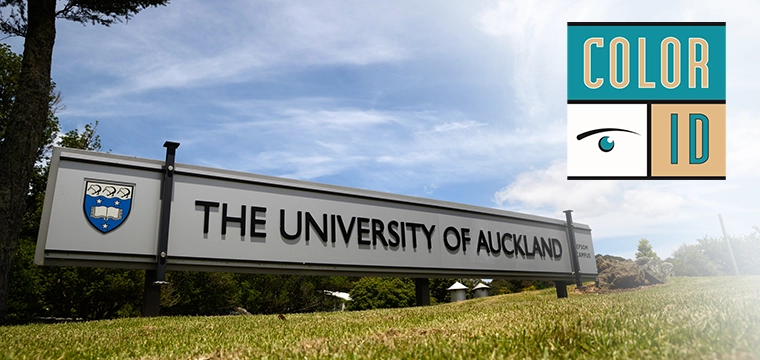
From new residence halls to mobile credential programs, institutions are finding creative ways to launch projects
Universities are expensive entities to operate and maintain. They are also constantly fighting the need to remain at the cutting edge of technology, student experience, and quality of education.
Meeting all these needs requires significant investment, and the universities that get creative with their funding acquisition can set themselves apart from the rest of the field.
With fewer state dollars, universities are having to get creative. If you're a public institution and you receive 10% of your operating costs from the state, you need to make up the other 90% somehow.
CampusIDNews recently caught up with ASSA ABLOY’s Tyler Webb, Director of Sales, Campus EAC, and Jim Primovic, General Manager Electronic Door Security Sales Group, to discuss infrastructure trends and ways institutions are finding the financial support to undertake new projects.
We explored three key trends in campus infrastructure funding: creative financing for mobile credential programs, public private partnerships for residence halls, and donor involvement for facility builds.
One of the most popular projects universities are looking to deliver – and find funding for – is mobile credentials. Campuses are increasingly making the move to mobile, but it can be a costly endeavor.
Since the launch of Student ID in Apple Wallet, there has been a push for something known as the 100% use case. This requires that mobile credentials can be used everywhere traditional plastic cards can be used.
Some are offering financing to fund a university’s migration to mobile. Zero-percent interest can help an institution reach the 100% use case requirement for mobile credential programs.
The big catalyst for movement was door access, but to achieve 100% ubiquity between mobile credentials and the plastic card, all touchpoints need to be brought in line. This can be a lengthy and expensive undertaking, but Webb points to some new methods for getting this over the line.
“We've seen some credential providers begin to offer financing to fund a university’s migration to mobile,” Webb says. “Zero-percent interest rate financing can help an institution reach the 100% use case requirement without an upfront capital expenditure. I don't think we’ve ever seen this before in this space.”
Campuses are also finding creative ways that provide more flexibility to meet the 100% use case.
“There are, for example, academic spaces that students wouldn't require access to in their freshman year, but they would need to access as upperclassmen,” explains Webb. “We're seeing a phased approach to access privileges that folds in the necessary mobile credential access over time as opposed to all at once.”
By rolling out mobile credentials on a phased approach starting with new students, a campus could meet the 100% use case requirement by outfitting only the locations that these new students must access. Deployment of reader infrastructure at locations not used by first-year students could be delayed until a future date.
Another area where campuses are finding new avenues to fund major infrastructure projects is the public-private partnership, often called a P3.
An increasing number of institutions are turning to P3s to erect new campus housing projects. In essence, a private company agrees to fund the construction of the new facility, easing the budgetary burden and expediting the timeline of traditional residence hall builds.
If you're trying to maintain a one-card experience, the P3 may need security system access, but traditionally, you must be a university employee with sufficient privileges and a .edu email address before you can even log into a system
“Ultimately, what these P3s are trying to do is create the same user experience that already exists on campus,” Primovic says. “But it takes a lot of planning, even in the design and build phases of the project, to get this experience right.”
These properties can either be operated by university staff or by a third-party entity, creating complexities with regard to the management of the access control platform.
“If you're trying to maintain a one-card or one-credential experience, the private entity may need security system access,” says Primovic. “But traditionally, you must be a university employee with sufficient privileges and a .edu email address before you can even log into a system.”
In a P3, who will manage the day-to-day administration of the system as it relates to the new facility? And who owns the data and controls the workflow?
“We’re also seeing campuses that want mobile credentials, but the P3’s may not fully understand what that entails,” says Primovic. “That’s when our team can step in and help guide both the campus and the private entity through the process.”
P3 agreements are growing in popularity, making it a more viable avenue for universities to embark on costly campus infrastructure projects.
“We're seeing P3s more and more frequently across the board,” says Webb. “If the university has an on-campus living component, I think we’re now to the point that a P3 can be in play.”
 The prospect of a P3 can be very compelling for a university, considering that somebody else can foot the bill for a project.
The prospect of a P3 can be very compelling for a university, considering that somebody else can foot the bill for a project.
“Granted, that entity does make the money for the length of the contract,” says Webb. “But it does alleviate a need in the here and now.”
“It’s all about speed,” says Primovic. “It can take four or five years for the campus to do it themselves, but a P3 can have the same project up and running in two years from start to finish.
There’s also an undeniable premium being assessed for on-campus housing. There’s no doubt that this is the result of convenience and a list of amenities once considered luxury by college living standards.
“Campus housing, regardless of who's footing the bill – the university or a private company – is expensive and costs are almost certain to rise,” says Webb. “The companies in the business of P3 developments know the market really, really well. They know how to set pricing effectively to maximize occupancy and profitability.”
Another tried-and-true method for campuses to acquire funding for security and infrastructure upgrades is through donors.
“Institutions are seeing fewer state dollars, so universities are having to go outside of traditional means for funding acquisition,” says Webb. “If you're a public institution and you receive 10% of your operating costs from the state, you need to make up the other 90% somehow.”
Donors remain an invaluable funding source for universities embarking on larger projects, like residence hall upgrades or new builds. Naming an on-campus building after a major donor isn’t a new concept, but Webb believes the practice will increase as state-allocated funds constrict.
“Campuses don’t necessarily think ‘we want to name new buildings after someone,’ but this is a perfect opportunity, where you have a donor or several donors, and they want their legacy on campus,” explains Webb. “Building something with their name on it is a great opportunity for the university to accept a large donor gift for something that will last.”
This idea of building things that will last is crucial to the future of higher education.
“The need for infrastructure doesn’t go away just because traditional funding sources decrease,” concludes Primovic. “We need creative approaches to obtain funding for these projects, whether they be technology such as access control or mobile credentials or facilities like residence halls and buildings.”




